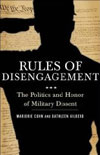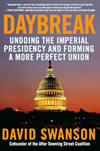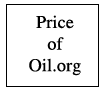U.S.-E.U. Conspire Against
The Nuclear Non-Proliferation Treaty (NPT)
This paper, presented by Ardeshir Ommani at a forum in White Plains, New York, on March 4, 2006, provides a perspective on Iran's nuclear activities not often appearing in the United States press.
By Ardeshir Ommani, Iranian Political Analyst
On February 4, 2006, the five powerful gentlemen of the United Nations’ Security Council, among other things, endowed with the legitimacy of the “world community”, decided to hang the Sword of Damocles over the head of the Iranian people and then sat back, playing ‘good cop – bad cop’, and waited to see if before the day of reckoning on March 6, a crack and schism occurs either within the governing body of the Islamic Republic itself or between it and the more affluent strata of the population with greater interests in commerce with the U.S. and the West.
Vice-President Dick Cheney, whose popularity score has plunged to a mere 27%, even lower than his boss, George Bush, Jr. who has managed to please only 34% of the American public, once said that the country that controls Middle East oil can exercise a “stranglehold” over the global economy. Did Cheney let the cat out of the bag?
Far back in 1997, Zbigniew Brzezinski, the former National Security Advisor to President Carter, in an article entitled “A Geo-strategy for Eurasia” that appeared in Foreign Affairs magazine, wrote:
“A power that dominated Eurasia would exercise decisive influence over two of the world’s most economically productive regions, Western Europe and East Asia. A glance at the map also suggests that a country dominant in Eurasia would almost automatically control the Middle East and Africa.”
On the basis of what transpires from these expressions one can undoubtedly reach a conclusion that the U.S. has been in the deadly business of dominating the world, and at this juncture targeting Iraq, Iran and Syria, the three countries that have dared to differ with the U.S. whims and wants. The act of U.S. belligerency against other nations and countries can take many forms, including economic and trade sanctions, diplomatic containment, orchestrating an environment of isolation, spreading fabricated propaganda and outright lies, intruding into the air space, carrying out acts of sabotage, buying off individuals to commit acts of treason, bribing other governments to take its side, or carrying out naked acts of aggression and war to subvert or overthrow a government. In the language of the U.S. government all these acts are committed under the cover of spreading “American democracy”. And now an old all-too-familiar argument is being resurrected to bring countries into line with U.S. domination plans for the Middle East: that Iran cannot be ‘trusted’ and must be “thwarted” in its plans to develop nuclear energy.
To deny Iran or any other country from ‘researching, developing and producing nuclear energy for peaceful purposes’ is a violation of the right of not only Iran, but other nations, as is embodied in the 4th paragraph of the Nuclear Non-Proliferation Treaty (NPT), administered by the International Atomic Energy Agency (IAEA) which is currently headed by Mohammed El Baradei.
This U.N. monitoring agency has visited the Iranian nuclear facilities innumerable times in the last two and a half years and held meetings with the Iranian authorities in charge of the nuclear energy programs. Throughout this long period, the U.S. has adamantly claimed (without a shred of proof) that Iran has a plan of producing nuclear bombs and therefore must be denied the right of uranium enrichment, a process for production of nuclear fuel used in nuclear reactors. All along the U.S. has brought pressure on the agency and its governing board to pass a resolution stating that Iran is in violation of the NPT (again a charge unsubstantiated by proof), and must be referred to the U. N. Security Council for possible economic sanctions.
And what has been Iran’s response? For the purpose of confidence building, Iran, in addition to allowing the regular inspection by the IAEA, accepted the additional protocol, which permits the nuclear agency to inspect any nuclear site without prior warnings. It is interesting to know that Israel is not a party to the NPT agreement, and has more than 250 nuclear bombs in its ‘secret’ arsenal, is building a huge apartheid wall on Palestinian land, against international law, but has never been referred anywhere for any reason! Also, “the United States has not yet adopted the necessary implementing legislation for the additional protocol to become a law”, according to the Arms Control Association’s fact sheet of January 2005. In addition to the on-going inspections by the IAEA, Iran held joint meetings with the three major western European powers and for the purpose of “confidence building” it “voluntarily” suspended its operations of nuclear enrichment for almost a year.
After a year’s meetings between the three European and the Iranian representatives, Europe extended the period without coming up with a resolution that would assure Iran’s right to produce its own fuel for nuclear reactors. On the contrary, they intended to use this period of suspension and set a precedence so that if Iran decided to resume the enrichment process, in the eyes of the so-called international community it would be considered a violation. In other words, the European enthusiasm for meeting with the Iranian government was a set-up, which would have served the U.S. policy of containment and imposition of sanctions, usurping once again like in Iraq, the offices of the U.N. to commit a genocidal crime against the people of Iran.
Learning from this experience, the Iranian government under the new President, Ahmadinejad, decided to withdraw from the endless meetings and bickering, and began not the process of uranium enrichment, but the earlier stage of turning yellow cake (uranium raw material) into a gaseous state called tetrafluoride.
A day did not pass that the major European countries, U.K., France, Germany, and the U.S. lurking in the dark, declared Iran in utter violation, pressed the IAEA for passing a resolution as to referring Iran to the U.N. Security Council for probable economic and trade sanctions. At this stage of development, Europe had completely capitulated to the foreign policy designs of the U.S. against not only Iran, but all the countries in the M.E., particularly Afghanistan, Iraq, Syria and Palestine. It did not take much persuasion on the part of the U.S., to make the European social democracy and the U.K.’s labor government to show their true imperialist colors.
In the history of the IAEA, no resolution had passed without a total consensus on the part of its board, composed of 35 members. In this case, albeit the resolution lacked muscle and teeth, the U.S. and the European social-imperialist powers could not muster a consensus. Without a deadline for referral, the IAEA resolution passed with 26 for, 8 abstentions, including China and Russia and one against, which was the vote from Venezuela.
The Iranian response to the resolution was an ultimatum that should it be referred to the U.N. Security Council, it may decide to withdraw from the IAEA and its membership in the Nuclear Non-Proliferation Treaty.
It was at this point that George Bush and Tony Blair of London declared that no measure with regard to Iran is off the table. In other words, they were implying the use of force and war against Iran. It was at this juncture that, according to Aljazeera’s Nov. 9th report, Iran decided to set up oil and associated derivatives market that invoice energy contracts in Euro’s rather than dollars. Aljazeera writes, “The contention that this could unseat the dollar’s dominance as the defacto currency” of reserve for oil and major commercial and world financial transactions “may be overstated, but this has not stopped many commentators from linking America’s political disquiet with Iran to the proposed Iranian Oil Bourse (IOB). The plan to set up the IOB was put forward, for the first time, in Iran’s Third Development Plan of 2000-2005. But the depreciation of the dollar since the year 2000 has been one strong reason for the shift to Euros.
It is a general consensus that if successfully implemented, the IOB will reward Iran with concrete economic benefits, especially if more of the invoices of its energy contracts are issued in Euros. From the economic and geopolitical point of view, invoicing in Euros is a rational strategy, since 45 percent of total trade with the Euro zone. Furthermore, Europe is the final destination for 1/3 of Iran’s oil exports, while the U.S. is not a direct purchaser of Iran’s oil production. Every student of economic discipline is aware that the U.S., by fixing the dollar in the position of world reserve currency, it has enjoyed tremendous advantage in international trade and benefited handsomely for more than half a century. According to Emilie Rotledge of Aljazeera.net, “George Perkovich of the Washington-based Carnegie Endowment for International Peace, has argued that Iran’s decision to consider invoicing oil sales in euros is ‘part of a very intelligent strategy to go on the offensive in every way possible and mobilize other actors against the U.S.’”
Iran’s decision to begin the process of converting yellow cake to the gaseous state of tetrafluoride invited an immediate reaction by George Bush and Tony Blair. Both threatened Iran with isolation and Blair warned that Iran will face “a much more difficult life” if it does not follow the direction set by the Western states, according to ABC online of November 3, 2005.
Realizing that the Iranian people, with their presence on the streets of many cities of Iran by millions, could not be cowed into accepting the language of force and violence, the U.S.-E.U. coalition of imperialists came up with a new design, for a new day. This fresh mirage, in its appearance, looked like a compromise that Iran cannot reject in the eyes of the so-called international community, another name for the big powers who rule the world. The new plan proposed to grant Iran the right of continuing, as it has done since August of 2005, the conversion process, the technical stage before the enrichment of uranium. But the process of enriching uranium would be done in Russia, which would ship the fuel for energy reactors back to Iran. From the start of this plot, they knew that the Iranian people and its government would not accept such a pseudo solution to its inviolable right of leading its own destiny. Meanwhile, Condoleeza Rice was shuttling between Moscow and Beijing to coerce or grease the palms of the leaders of those countries to bring pressure on Iran to give up its right to a full-fledged nuclear energy program and accept the solutions of ever-dependency on other countries for the future generations to come. According to The New York Times of Nov. 10th, the new proposal…is an effort to give Iran a face-saving way out of its standoff, reflecting the views of the officials from both the U.S. and Europe.
The Iranian response on November 14th to the fraudulent proposal was a resounding NO! But Iran went a step further and announced that it will be ready to cooperate with other countries in joint venture to produce fuel for the civilian nuclear energy reactors. Both Russian and Chinese leaders have numerously stated that Iran has an inalienable right to the uranium enrichment process within the framework of the nuclear Non-Proliferation Treaty, and also, they disassociated themselves from the new scheme of Washington and London. On the other hand, Bush and Blair came into the possession of a new propaganda tool against Iran, with the hope of influencing the attitude of the IAEA board members in its November 24th meeting, in favor of referring Iran to the U.N. Security Council. The problem for Washington and London is that the composition of the board will change by that date and the newcomers will be Cuba, Belarus, and Syria, who certainly will be on the side of Iran. Furthermore, in mid-October Condoleeza Rice admitted that the U.S. might lack a sufficient number of votes to pass a second resolution for referring Iran by a certain deadline to the U.N. Security Council.
Meanwhile, by early November, Iran invited the U.N. monitoring agency (IAEA) to inspect its Parchin facility, a military base that the U.S. had all along claimed to be the most intensive Iranian nuclear enrichment plant for the production of nuclear bombs. According to a spokeswoman for the U.N. agency, Melissa Fleming confirmed that the U.N. inspectors “were allowed to visit everywhere at the complex, do interviews, and take samples.” She reaffirmed that “we are pleased, we got access; it was not restricted. We were allowed to see all the buildings and to take environmental samples.” (NYT, Nov. 7th, 2005).
But anytime the imperialist establishments and their henchmen in the U.S. or abroad do not like what they hear from the international agencies, they begin discrediting their results and challenge the legitimacy and credibility of its findings, the same pattern that the U.S./Britain and company pursued before the war in Iraq. For example, the Canadian newspaper, Toronto Star, wrote on October 14th, about ten days after the U.N. inspection of the Iranian facilities, “the IAEA’s history is not completely rosy.” It added, “Before the Gulf War, Iraq deceived IAEA inspectors and pursued a uranium enrichment program.” As one can see, the Toronto Star discredits the U.N. agency but says not a word about Israel that, with the assistance of the U.S. and Britain, has already amassed a stockpile of nuclear weapons, without even becoming a party to the nuclear Non-Proliferation Treaty. Apparently, Toronto Star editors think that some countries and classes of people are above the law.
Frustrated from its inability to defeat the freedom fighters in Iraq and to bring Iran to its knees, the U.S. has resorted to its old tricks; ones concocted in the laboratories of the CIA and the office of the President and Vice-President Dick Cheney who defended the U.S. military exemption from the ban on torture of prisoners kidnapped around the world. For its final act of deception before the IAEA’s meeting on September 24th, U.S. government publicized that it is in the possession of a laptop that decodes Iran’s “intention” of planning to construct atomic warheads, which could fit its new missiles, called Shahab (Shooting Star). The Bush administration, apparently understanding the depth of its credibility deficit, discusses the content of the laptop computer in private and secret settings. So far the U.S. has performed a dozen such private briefings. One can see that the mystery is an “open secret”. The content of the laptop is not an actual data, material from a practical research study or test results, but simply a simulation.
In mid-July, a group of senior CIA officials invited a few top officials of the international atomic inspection agency to the top of a skyscraper in Vienna, Austria to reveal the figments of their imagination, which were entirely a simulation of fabricated images. In the best of all possible worlds, few, if any, unbiased individuals are willing to accept the U.S. weapons intelligence without a host of questions. A European diplomat who was privy to the secret meeting said after the gathering that, “I can fabricate that data.”





